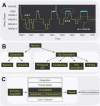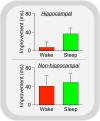How do I remember? Let me count the ways
- PMID: 19699665
- PMCID: PMC2739268
- DOI: 10.1016/j.smrv.2009.05.004
How do I remember? Let me count the ways
Figures




Comment on
-
The whats and whens of sleep-dependent memory consolidation.Sleep Med Rev. 2009 Oct;13(5):309-21. doi: 10.1016/j.smrv.2008.08.002. Epub 2009 Feb 28. Sleep Med Rev. 2009. PMID: 19251443 Review.
References
-
- Diekelmann S, Wilhelm I, Born J. The whats and whens of sleep-dependent memory consolidation. Sleep Med Rev. 2009 in press. - PubMed
-
- Walker MP, Stickgold R. Sleep-dependent learning and memory consolidation. Neuron. 2004 Sep 30;44(1):121–33. - PubMed
-
- Rechtschaffen A, Kales A. A manual of standardized terminology, techniques and scoring system for sleep stages of human subjects: Brain Information Service. University of California; Los Angeles: 1968. - PubMed
-
- Tulving E. How many memory systems are there? American Psychologist. 1985;40:385–98.
Publication types
MeSH terms
Grants and funding
LinkOut - more resources
Full Text Sources
Medical

